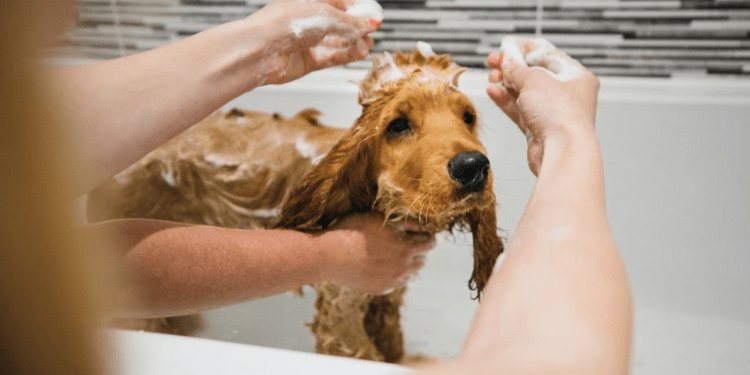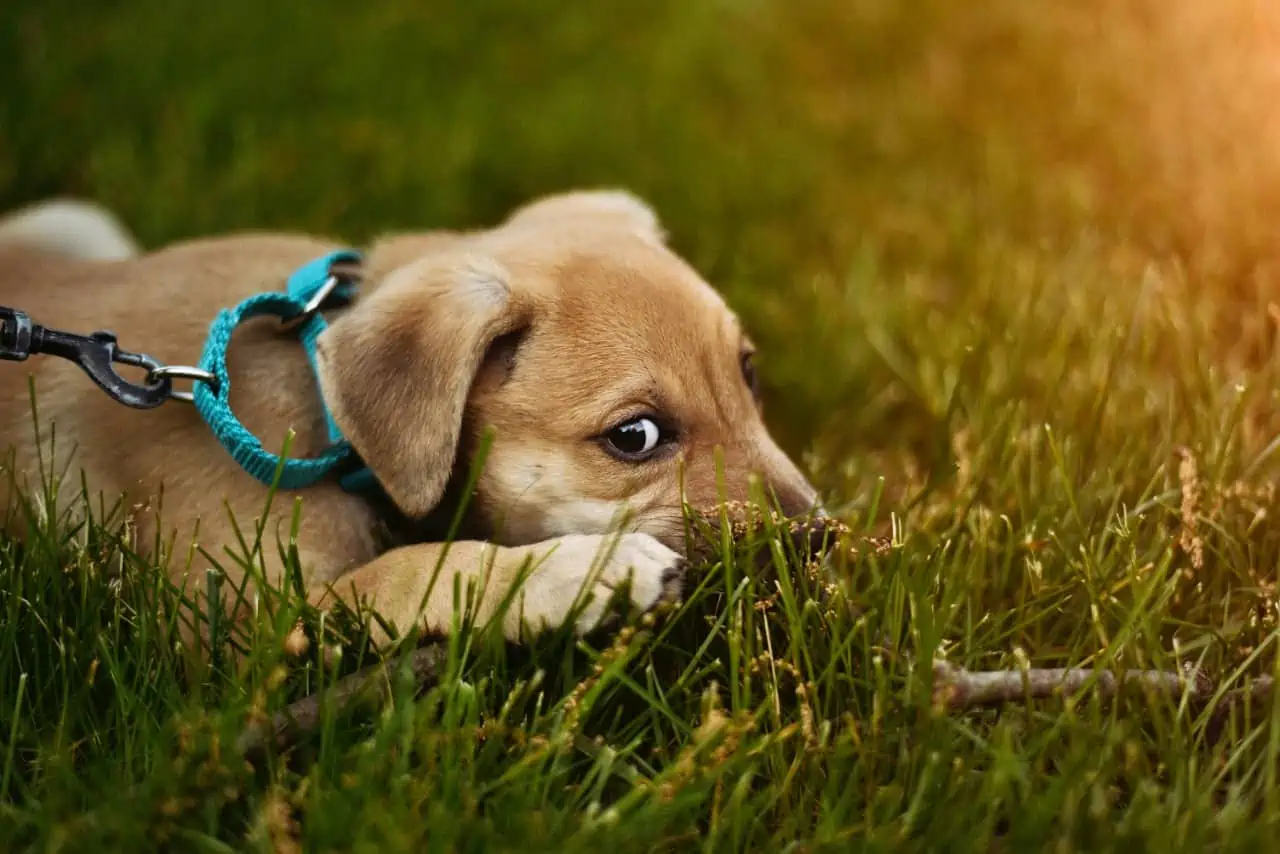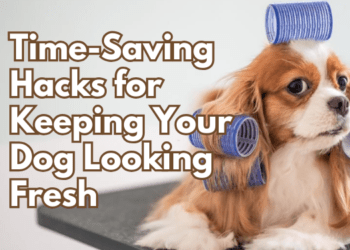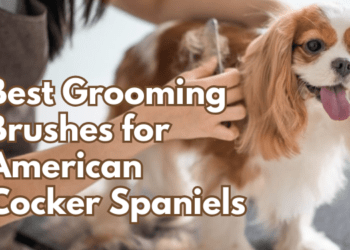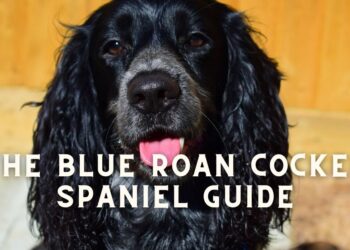The best way to bathe your cocker spaniel puppy is more than just a quick rinse. It plays a significant role in their well-being. Regular baths help remove dirt and odors that can accumulate in their fur. This is especially important for Cocker Spaniels because their long, silky coats are prone to collecting dirt and debris.
Additionally, proper bathing can help prevent allergies by removing allergens that might be trapped in their fur. Beyond hygiene, bath time can also be a special bonding experience between you and your puppy. It’s a chance for you to build trust and create positive associations with water and grooming.
Table of Contents
- 1 Understanding Your Cocker Spaniel Puppy
- 2 When To Bathe Your Cocker Spaniel Puppy
- 3 How to bathe a 2-week-old puppy
- 4 How to bathe a 3.5-week- 4-week-old cocker spaniel puppy
- 5 Bathing a 4-6 month-old Cocker spaniel pup
- 6 Frequency of baths as your puppy grows
- 7 How often should I bathe my Cocker Spaniel puppy?
- 8 What type of Shampoo should I use for my Cocker Spaniel puppy?
- 9 My puppy is scared of the bath. What can I do?
- 10 Can I use a human hairdryer to dry my Cocker Spaniel puppy?
- 11 Conclusion
Understanding Your Cocker Spaniel Puppy
Cocker Spaniels are a distinct breed characterized by certain specific attributes. Notably, they possess a double coat, distinguishing them from other canine species. Unlike many spaniels, Cocker Spaniels tend to exhibit longer and more abundant coats.
Newborn Cocker Spaniel puppies are adorned with a soft and silky coat, transforming 4 to 8 months of age. Their initially soft puppy fluff gradually gives way to thicker, curlier fur during this period. Additionally, they develop feathery fur on their underside, legs, chest, and ears, enhancing their unique appearance.
When To Bathe Your Cocker Spaniel Puppy
Determining the appropriate age for your Cocker Spaniel puppy’s first bath is crucial to their early care. Typically, it’s best to refrain from bathing your Cocker pup too frequently, aiming for no more than once a month unless specific circumstances require otherwise, such as exposure to dirt and grass resulting in soiled fur.
The ideal time to begin their bathing routine is when they reach the age of at least eight to twelve weeks and have completed the weaning process from their mother. This age range ensures they are better prepared for the bathing experience and can adapt to the process more comfortably.
How to bathe a 2-week-old puppy
Bathing a 2-week-old puppy is a task that should be approached with utmost care and reserved for exceptional circumstances, as very young puppies are highly vulnerable and sensitive. Ideally, waiting until the pup is older and more robust for regular bathing is best. However, there may be situations where your little furball becomes unusually dirty or emits unpleasant odors, necessitating a gentle cleaning process.
Begin by preparing a soft cloth that is dampened with warm water. It’s crucial to ensure the cloth is not overly wet but comfortably warm to prevent any temperature shock to the young puppy. Be meticulous in squeezing out any excess water so the cloth remains damp but not dripping.
Next, delicately wipe the soiled areas of the puppy’s body using small, gentle circular motions. Focus only on the areas that require cleaning, not exposing the puppy to cold air for extended periods.
After cleaning, gently pat the puppy dry with a separate dry cloth. It’s vital to keep the puppy warm throughout this process to prevent any chilling.
Wrap the freshly cleaned and dried puppy in a soft blanket or towel. This snug wrap helps maintain their body heat and provides comfort and security.
The final step is to reintroduce the cleaned puppy to its mother. The mother dog is vital in keeping her puppies warm, clean, and nurtured.
Avoid shampoos or antiseptic products during this process, as the mother is likely to lick her puppy after reuniting. These chemicals can be harmful to both the mother and the fragile puppy.
In cases where the puppy has thoroughly soiled itself or experienced severe diarrhea, create a warm environment in a closed room, like a bathroom. Dampen a cloth and start cleaning from the puppy’s head, neck, and chest, moving gradually towards the back and tail. Clean the underside of the tail last. Afterward, use a different towel to dry the puppy thoroughly and then wrap it in a cozy blanket to maintain warmth.
Always prioritize the well-being and comfort of the 2-week-old puppy when bathing, ensuring that they are protected from cold drafts and that the cleaning process is gentle and efficient.
Furthermore, it is advisable to consult your veterinarian and consider their vaccination schedule when planning your pup’s bathing routine. Veterinarians often recommend waiting for 1-2 weeks after each vaccination before initiating a regular bath schedule. This precaution helps ensure your Cocker Spaniel pup’s overall health and well-being while maintaining their hygiene in a balanced manner.
How to bathe a 3.5-week- 4-week-old cocker spaniel puppy
Bathing a Cocker Spaniel puppy at the tender age of 3.5 to 4 weeks requires special attention and gentle handling. While it’s generally advisable to wait until puppies are older for their first bath, there are situations, such as orphaned or abandoned puppies without maternal care or those exposed to unhygienic conditions, where a bath becomes necessary. Here’s a detailed guide on how to bathe a Cocker Spaniel puppy of this age:
Understanding the Timing and Preparation
At around four weeks, Cocker Spaniel puppies begin to learn how to regulate their body temperature. However, it’s important to note that they might not fully comprehend the effects of cooler water temperatures. To ensure their comfort, it’s crucial to maintain a warm room environment before you begin the bathing process.
Initial Grooming
Begin by gently brushing your Cocker Spaniel puppy’s coat. This step is essential to remove any visible mats, tangles, or debris that might hinder the effectiveness of the bath. Brushing also helps distribute natural oils in their coat, contributing to their health.
Gathering Supplies
Before starting the bath, assemble all the necessary supplies. You’ll need a soft towel, a puppy-specific shampoo (look for one formulated for sensitive skin), a small tub or sink, a non-slip mat to place in the tub, and grooming combs.
Preparing the Bath
Fill the small tub or sink with warm water. Be mindful that the water should be comfortably warm but not hot, as young puppies are sensitive to temperature changes. Add a small amount of puppy shampoo to the water, ensuring it’s well-dissolved. For instance, Burts and Bees 2-in-1 tearless Shampoo and Conditioner is a suitable choice for Cocker Spaniel pups with itchy skin, while Sentry Tick and Flea shampoo with oatmeal can be used for those with ticks.
Water Temperature Check
Before placing your puppy in the water, double-check the temperature to ensure it remains within the comfortable range. A simple test with your wrist can help confirm that the water is neither too hot nor too cold for your pup.
Cleaning the Face, Eyes, and Ears
Warm a soft cloth with water from the tub, and squeeze out any excess moisture. Gently wipe your puppy’s face, paying close attention to their eyes and ears. When cleaning their eyes, use a separate moist cotton swab for each eye. For their ears, wrap a piece of gauze around your fingers to clean them gently. This step is crucial to remove any debris or dirt from sensitive areas.
The Bathing Process
Carefully place your Cocker Spaniel pup into the warm, soapy water. Start by gently circular motions washing their neck, back, undersides, and tail. The goal is to cleanse them thoroughly while ensuring they remain calm and comfortable throughout the process. Take care not to stress the young pup during the bath.
Rinse and Dry
Once the cleaning process is complete, lift your puppy out of the water and allow the tub to drain. Wrap them in a warm, dry towel immediately. Gently pat their fur in circular motions to remove excess moisture and help them dry off. You can also opt for a low-heat blow dryer, but keeping it several inches away from the fur is crucial to prevent burns. Ensure the airflow is continuous to avoid overheating.
Bathing a 3.5 to 4-week-old Cocker Spaniel puppy is a delicate process that should prioritize their comfort and well-being. Always use puppy-specific products to ensure their safety and health. While this age is suitable for introducing them to bathing routines, it’s essential to be patient, gentle, and attentive to their needs throughout the process.
Bathing a 4-6 month-old Cocker spaniel pup
Bathing a Cocker Spaniel puppy aged 4 to 6 months can be an adventure due to their natural temperament, which may or may not incline them to cooperate during the procedure. To make bath time a positive experience, consider using positive reinforcement techniques with treats before and after the bath. Here’s a step-by-step guide for bathing your Cocker Spaniel pup of this age:
Prepare and Brush
Begin by gently brushing your puppy’s coat to remove any tangles and mats. This ensures a smoother bath and helps maintain their coat’s health and appearance.
Choose the Bathing Area
Select a suitable bathing area, whether it’s a shower cubicle, bathtub, or wet room. Place an anti-slip mat in the chosen area to prevent any accidents during the bath.
Gather Supplies
Have all your bathing supplies ready, including gentle-formula shampoos and conditioners designed for puppies. At this age, you can apply these products directly to their fur.
Prepare the Bath
Fill a slightly larger-sized tub with lukewarm water, considering the puppy’s size and age. Alternatively, you can use a hose for a more controlled bathing experience. Consider using treat holders or lickable mats attached to the tub to keep your pup distracted.
Soak Their Coat
Slowly and gently soak their coat in the warm water, carefully avoiding getting water in their eyes or ears. If using a bathtub, ensure the water level stays below halfway up their legs to prevent discomfort.
Apply Shampoo
Mix the puppy shampoo with water and apply it evenly over their chest, underbelly, back, legs, and tail. Be cautious to avoid the eyes and ears. Once the shampooing is complete, rinse off the Shampoo thoroughly.
Use Conditioner
If your Cocker pup has matted fur or tangles, apply a moisturizing or detangling conditioner. This helps in making their coat smoother and more manageable.
Gentle Bathing for Resistant Pups
For Cocker pups that are resistant or fearful of baths, you can use a bucket and a mug for a gentler bathing process. Make sure to rinse off any residual shampoo or Conditioner thoroughly from their fur.
Towel Dry or Use a Hairdryer
After the bath, towel dry your puppy gently. Alternatively, you can use a hairdryer, but avoid directing the airflow at their face or ears, as this can be uncomfortable. Keep the hairdryer a few inches away and ensure the airflow is consistent.
Post-Bath Care
Brush your Cocker Spaniel’s coat once it’s dry. This helps prevent matting and keeps their coat looking its best. Remember to reward them with a treat to let them know they’ve done a great job during their bath.
Bathing a 4 to 6-month-old Cocker Spaniel pup can be a rewarding experience with the right approach. Patience, positive reinforcement, and gentle handling are key to making bath time a positive and enjoyable routine for your furry friend.
Frequency of baths as your puppy grows
As your Cocker Spaniel puppy grows, adjust their bath frequency accordingly. In early puppyhood (8-12 weeks), limit baths to once a month unless they get very dirty. During adolescence (3-6 months), gradually increase bathing to every 6-8 weeks. Establish a regular bathing schedule in adulthood (6+ months), usually every 6-8 weeks. Adapt based on their coat type and activity level. Be mindful of overbathing, as it can lead to skin issues. Use dog-specific Shampoo and consult a vet if needed. Regular brushing between baths can help maintain cleanliness and coat health.
How often should I bathe my Cocker Spaniel puppy?
You should generally bathe your Cocker Spaniel puppy no more than once a month unless exceptional circumstances, like dirt or unpleasant odors, necessitate more frequent baths. Cleaning them too frequently can strip their coat of essential oils, potentially leading to skin problems.
The key is balancing cleanliness and preserving their skin’s natural health. Adjust the frequency of baths based on their activity level and individual needs. If they spend a lot of time outdoors or engage in activities that make them dirty, you may need to bathe them more often. Conversely, if they’re mainly indoors, less frequent baths may suffice. Always prioritize their well-being and use a mild, puppy-specific shampoo to keep their coat fresh and healthy.
What type of Shampoo should I use for my Cocker Spaniel puppy?
It’s best to use a gentle, puppy-specific shampoo for your Cocker Spaniel puppy. Look for shampoos labeled as “puppy” or “mild” formulas. These shampoos are specifically designed to be gentle on a puppy’s delicate skin and coat. Avoid using shampoos formulated for adult dogs or humans, as they may contain harsh chemicals that can be too strong for a puppy’s sensitive skin.
Also, consult with your veterinarian if your Cocker Spaniel puppy has specific skin or coat concerns, such as itching or allergies. They may recommend a specialized shampoo to address these issues. Always prioritize the well-being of your puppy and choose products that are safe and appropriate for their age and specific needs.
My puppy is scared of the bath. What can I do?
If your puppy is scared of the bath, there are several steps you can take to help them overcome their fear and make bath time a more positive experience:
Start Slowly
Introduce your puppy to the bathroom or bathing area when you’re not planning to bath them. Let them explore the space and get comfortable with it.
Positive Associations
Make the bathing area a place of positive associations. Play with your puppy near the bath or offer treats and praise while they are in or around the tub.
Gradual Introduction
Begin by filling the tub with a small amount of lukewarm water and allow your puppy to stand in it without actually bathing it. This helps them acclimate to the water gradually.
Use Treats
Offer treats before, during, and after the bath to create positive associations with the experience.
Gentle Handling
Be gentle and calm when handling your puppy during the bath. Speak soothingly and avoid sudden movements that could startle them.
Short Sessions
Keep the initial baths short and gentle. You can gradually increase the length of the bath as your puppy becomes more comfortable.
Comfort Items
Place a non-slip mat or towel in the tub to give your puppy better footing, which can reduce their anxiety.
Routine
Establish a consistent bath time routine so your puppy knows what to expect. Predictability can help reduce anxiety.
Stay Calm
Stay calm and patient throughout the process. Your puppy can pick up on your emotions, so remaining relaxed can help them feel more at ease.
Professional Help
If your puppy’s fear of the bath persists and becomes severe, consider seeking the assistance of a professional dog trainer or behaviorist who can provide specialized guidance.
Remember that each puppy is unique, and it may take time for them to overcome their fear of the bath. You can help your puppy feel more comfortable and secure during bath time with patience, positive reinforcement, and a gradual approach.
Can I use a human hairdryer to dry my Cocker Spaniel puppy?
Yes, you can use a human hairdryer to dry your Cocker Spaniel puppy, but it’s essential to do so with caution and the following considerations:
Low Heat Setting
Ensure that the hairdryer is set to the lowest heat setting, or better yet, a cool air setting. High heat can be uncomfortable for your puppy and may even burn their sensitive skin.
Maintain Distance
Keep the hairdryer safe from your puppy’s fur to prevent overheating or discomfort. Holding it a few inches away from their coat is ideal.
Constant Motion
When using the hairdryer, keep it in constant motion. Avoid concentrating the airflow in one spot for too long to prevent overheating or causing burn spots.
Avoid Face and Ears
Be particularly cautious when drying around your puppy’s face and ears. Use your hand as a barrier to shield these areas from direct airflow.
Supervision
Always supervise your puppy while using the hairdryer to ensure their safety.
Positive Associations
Use treats and positive reinforcement to create a positive association with the drying process, helping your puppy become more comfortable with it over time.
Alternatives
Alternatively, gently towel-dry your puppy to remove excess moisture and allow them to air dry naturally in a warm, draft-free environment.
While using a human hairdryer is possible, some pet-specific dryers are designed to be quieter and less intimidating for dogs. If you find that your puppy is particularly anxious or fearful of the hairdryer, you might consider investing in a quieter pet dryer designed for this purpose.
Conclusion
In summary, bathing your Cocker Spaniel puppy is an important part of their care routine, with age-specific considerations to ensure their comfort and health. While very young puppies should be bathed sparingly and with great care, older puppies between 4 and 6 months can gradually adapt to regular baths.
If you are a dog lover then, Subscribe to our weekly newsletters. No Spams!
